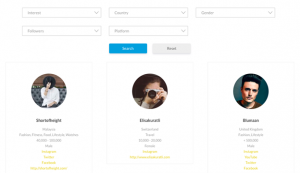This affordable housing project wasn’t going to happen—and then an unlikely partnership formed
Co-locating affordable housing and a Boys & Girls Club made two complex projects possible.
BY Nate Berg
In the economically disadvantaged Lincoln Park neighborhood of New Rochelle, NY, two long-sought community projects have, after decades, finally come to fruition. All they needed was to combine forces and colocate.
The Boys & Girls Club of New Rochelle has been a center of this majority Black and Latinx community for nearly a century, but its facility was feeling the aches and pains common to 75-year-old buildings. Next door to it was a plot of land that had sat tantalizingly empty for decades, targeted for housing that always seemed just out of reach. A unique real estate development project has combined those two projects into one. A new affordable housing development there is providing much needed housing to the area while also funding a major revitalization of the Boys & Girls Club.

The project is called the Renaissance, and includes 179 units of subsidized family housing. The development also doubled the size of the Boys & Girls Club to 22,000 square feet, making it one of the biggest in the country. Colocated together, they’re the kind of mutually beneficial community projects that are beginning to become more common across the U.S.
Getting it built
The $96-million project was developed by the national housing developer the NRP Group in partnership with the Boys & Girls Club of New Rochelle, local developers and nonprofit organizations. The city’s faith community had been calling for this type of investment in Lincoln Park for decades.
The NRP Group, which has developed more than 50,000 units of housing across the U.S., brought the institutional experience to turn the idea into reality. “We were standing on the shoulders of existing previous community work that had been done,” says Jonathan Gertman, senior vice president of development for the NRP Group in New York. “We had faith leaders, not just in the project but in the area that had been visioning renewal for literally decades. So we didn’t come in fresh with the idea. We came with a plan.”

Gertman says this neighborhood is a classic example of bad planning decisions made in the post-war era, to the detriment of residents. Homes were demolished for “a six-lane road that was built to nowhere,” Gertman says. A neighborhood public school was also demolished and investment was shifted to a different part of town. “It was clearly a spot that was crying out for investment.”
Average incomes in the area are around $40,000, and more than 60% of kids live in single-parent households. The NRP Group realized that the neighborhood’s decades of disinvestment actually opened the door for a creative use of the federal low-income housing tax credits that subsidize a lot of affordable housing development in the U.S. The Lincoln Park neighborhood was technically referred to as a qualified census tract, which made it eligible to apply those tax credits to a broader range of community facilities beyond just housing. “We were able to use the tax credits, which we typically think of for housing, to help finance and make the Boys & Girls Club a reality,” Gertman says.
A new model for housing
Affordable housing and an expanded Boys & Girls Club are reinforcing projects—residents will become a built-in user group for the Club, and the Club’s facilities and programs seen as amenities for the building’s residents.
“They [NRP] put over $10 million into providing us with a brand new clubhouse,” says Becky Mazzanobile, CEO of Boys & Girls Club of New Rochelle. “There’s no way that would have happened for children in our community without that type of funding and project management.”
Securing extra financing for this larger colocated project helped get the housing built, but it wasn’t just a side benefit, according to Gertman. “The club and the kids were at the center of the whole plan,” he says.

The new clubhouse includes a gym, classrooms for after-school programs serving students from kindergarten through 12th grade, a podcast studio, a STEM laboratory, and other recreational spaces. It also includes a teaching kitchen, and spaces for job training and development for teenagers and adults.
“It’s not just affordable housing units or just a community center,” says Mazzanobile. “It really was thinking holistically about how to revitalize that area.”
The housing units are priced to be affordable for households earning between 37% and 80% of the area median income, or about $125,000 for a family of four. The project opened May 2, and more than 300 people showed up for the opening ceremony. “That’s pretty unusual,” says Gertman. “But in a world where it seems like it’s impossible to get hard things done, this project is kind of the antidote, and there’s just a lot of excitement. And pride across the community.”

ABOUT THE AUTHOR
(11)
Report Post





